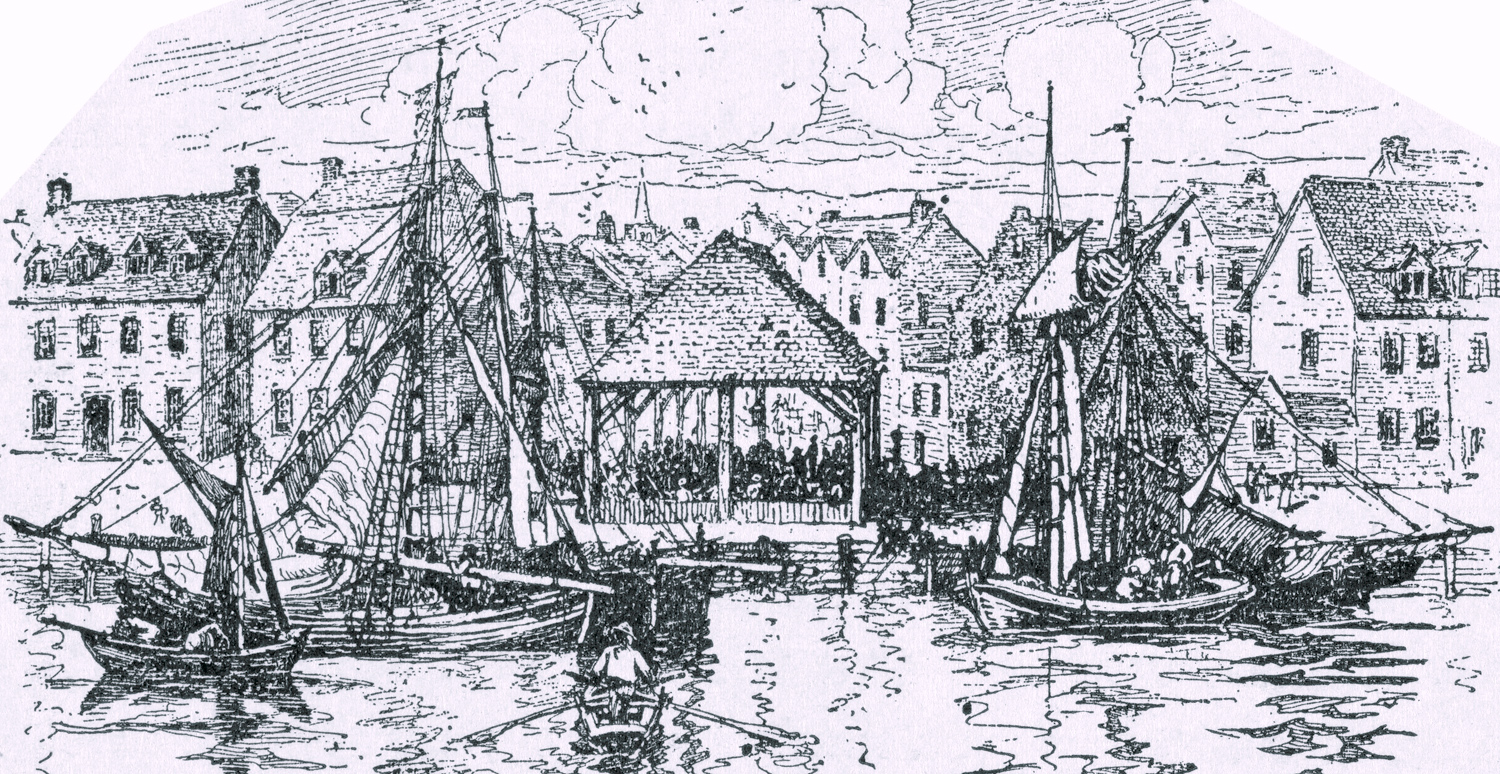
Slave Market, Foot of Wall Street - 1730
Original title: New York Slave Market about 1730. Redrawn from an old print [British artist Harry Fenn (1837-1911), according to the NYPL]. Published in A History of the American People by Woodrow Wilson, 1902.
The engraving above shows a structure that served as slave market at the waterfront in Wall Street, view from East River, facing west. After 1653, a fortified city gate was constructed on the foot of Het Cingel (Wall Street). In 1709, the slave market was constructed about the same place and a Common Council law regulating it was established on November 30, 1711. This market that auctioned enslaved people of African ancestry was in operation until 1762.
Slavery was introduced to Manhattan in 1626, with the first Dutch settlement. By the mid-18th century about one in five people living in New York City was enslaved and almost half of Manhattan households included at least one slave. Slavery was abolished in the State of New York in 1827 and, in 1841, the State abolished the right of non-residents to have slaves in the state for up to nine months.
The structure on the Foot of Wall Street was renamed the Meal Market in 1826 because corn, grain and meat were also traded there. This structure was removed before the end of 18th century and the Wall Street Ferry was built on the place in 1853. More: Wall Street in 18th century ►

|
Copyright © Geographic Guide - Old images of NYC, 18th Century. |
